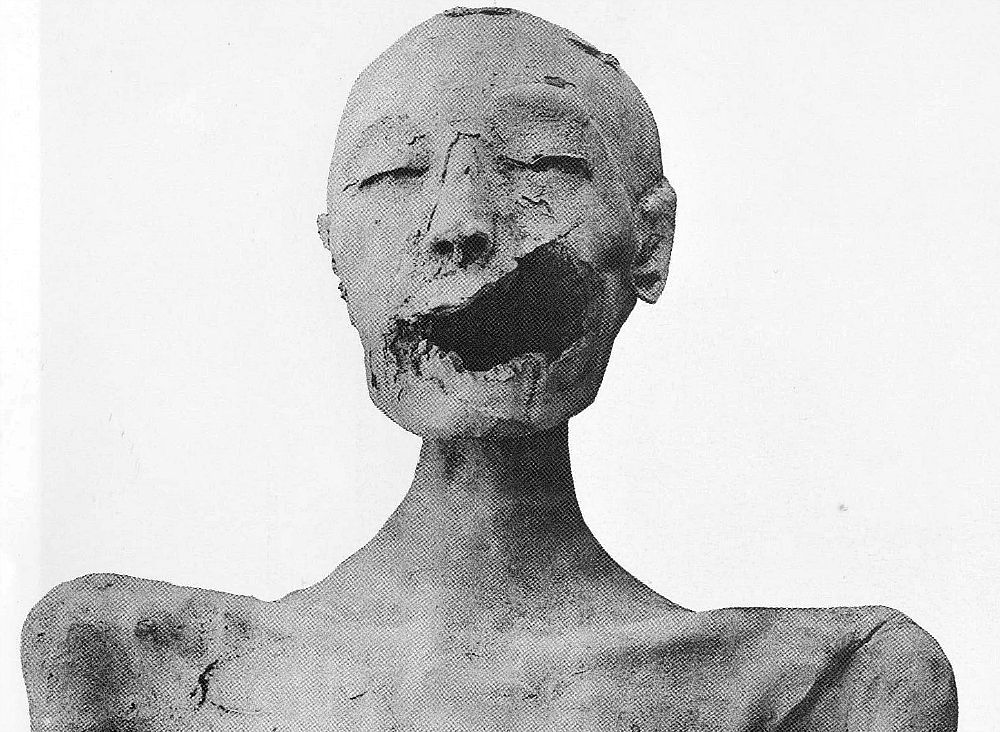The French Egyptologist Marc Gabolde, a specialist in the 18th Dynasty and in the Amanian period Egyptians, maintains that the mummy known as the "Young Lady" discovered a century ago, is actually that of the famous and much sought after Queen Nefertiti.
Since yesterday, Monday , the British researcher Nicholas Reeves has been in Luxor , as we had announced in Ancient-Origins . Reeves assures that inside the tomb of the Pharaoh Tutankhamun , discovered by Howard Carter 93 years ago, there is access to a secret chamber where the long-sought tomb of the beautiful Nefertiti would be found . The renowned Egyptologist, a member of the University of Arizona , claims to have reached this conclusion after observing high-resolution images of the crypt of the so-called “ pharaoh-child”In which you can see some fine indentations that would correspond to the sealed entrance of a hidden chamber. A secret room in which the mortal remains of the wife of the revolutionary Pharaoh Akhenaten would rest . These images, taken by the Spanish company Factum Arte , were necessary to build the digital reproduction of Tutankhamun's tomb.
We have detected that you are using an ad blocker which is preventing the player to display. To support this website and our publishers we ask you to please turn your ad blocker off so that you may enjoy this great content.
However, for Marc Gabolde , a French Egyptologist specializing in the Eighteenth Dynasty and the Egyptian Amanian period , the mummy of Nefertiti was discovered a century ago in the Valley of the Kings by Victor Loret, also a Frenchman . A mummy that would currently be in the Egyptian Museum in Cairo and is known as the Young Lady or KV35YL mummy .
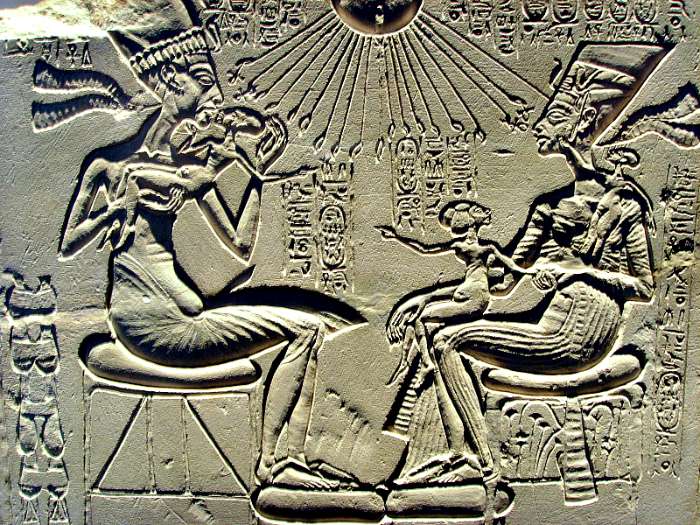
Limestone relief that was probably part of a family worship altar. Akhenaten holds his first-born Meritaton in his arms and, in front of them both, Nefertiti holds Meketaton, his second daughter -who would die prematurely- in his lap and his third daughter Anjesenpaatón, who would later marry Tutankhamun, on his left shoulder . Berlin Museum. ( Wikimedia Commons )
Smaller than usual royal tombs
In statements to the Spanish newspaper ABC , Gabolde states that affirming that there are two other chambers in the tomb of Tutankhamun " does not have anything" crazy "a priori ", in view of other royal tombs in the Valley of the Kings such as those of Amenhotep II (KV 35), Tuthmosis IV (KV 43) and Amenhotep III (WV 22) and even that of Horemheb (KV 57). However, he also believes that the fact that Tutankhamun's burial chamber is noticeably smaller simply indicates that the actual dimensions were given up and a ' more fair chamber was excavated .»For Tutankamon. It is not surprising therefore that, given this economy, the four secondary chambers were reduced to two. " It is nothing absolutely abnormal, " says this scholar, a member of the University of Montpellier .
The researcher also explains that there are other tombs of Egyptian pharaohs such as that of Ay , Tutankhamun's successor, in which not all the attached chambers were excavated, and also recalls how when Ramses I died the second ramp corridor of his grave. In fact, his son ' Seti I simply had this corridor widened to constitute a burial chamber provided with 2 and a half annexes and not the four required, renouncing, as in those of Ay and Tutankhamun, its excavation. If time lacks, the excavation of all the annexed areas does not seem a priority. If we take all this into account, the presence of supplementary cameras in Tutankhamun's tomb is less "obligatory" than what Reeves suggests.», Clarifies Gabolde.
Nor, according to Gabolde, would the marks found by Reeves necessarily have to be traces of sealed doors: 'they could be joint marks of two teams of carvers ' or' have been part of a project to excavate supplementary chambers, hastily abandoned, with cracks that were hastily plugged. I sincerely hope that Reeves is partially right and that he finds a sealed room with the remains of the pharaoh queen behind the paintings "because" it might clarify the identity of the pharaoh queen . " This one, however, " is more likely to be Meritatón than Nefertiti, " the Egyptologist expert highlighted in his statements published on ABC.
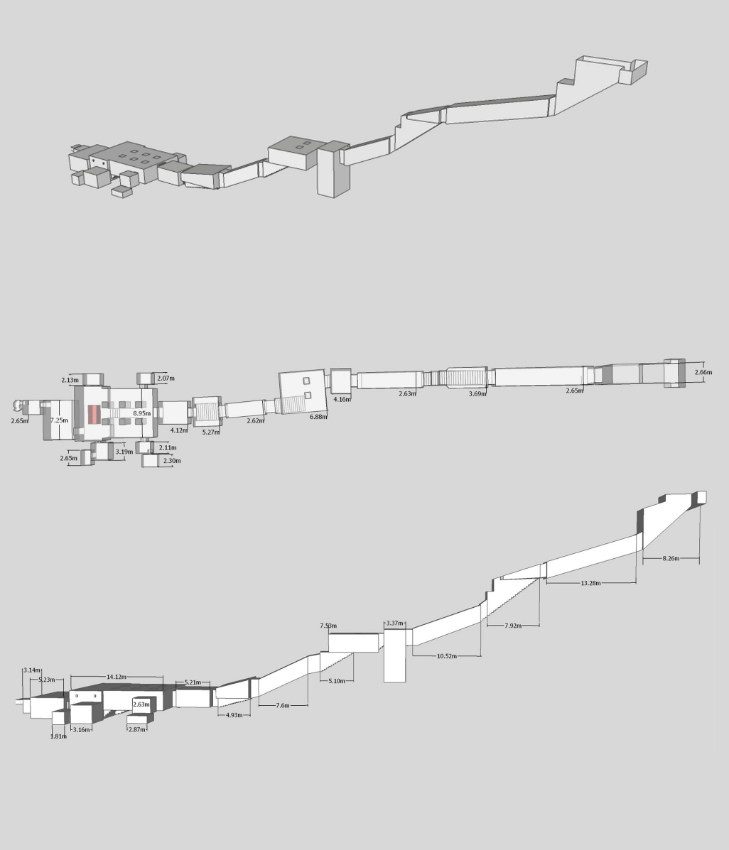
Isometry, plan and elevation images of tomb KV57 belonging to Horemheb made from a three-dimensional model. ( Wikimedia Commons )
- Queen Nefertiti's Tomb Could Be Found Behind the Walls of Tutankhamun's Burial Chamber
- Countdown to the Search for the Tomb of Nefertiti
- The Egyptian Government Closes the Tomb of Tutankhamun to the Public to Begin Restoration
The Young Lady
In September 2010, National Geographic released the results of an investigation carried out by an interdisciplinary team led by the famous and controversial Egyptologist Zahi Hawass . With her it was verified, by means of DNA tests, that the mummies of the KV35 were, in fact, the grandmother and the mother of Tutankhamun.
Marc Gabolde believes that the mummy that those studies identified as that of Tutankhamun's mother - or Young Lady - is actually the mummy of Queen Nefertiti: « Nefertiti was Akhenaten's first cousin, both by paternal and maternal descent and is identical to the KV35YL mummy. She is the mother of Tutankhamun .
According to the French Egyptologist's hypothesis , the strong inbreeding would have meant that "the genetic mix would have been quite weak, which would explain why the genetic patrimonies of Akhenaten and Nefertiti had the appearance of a brother and a sister."
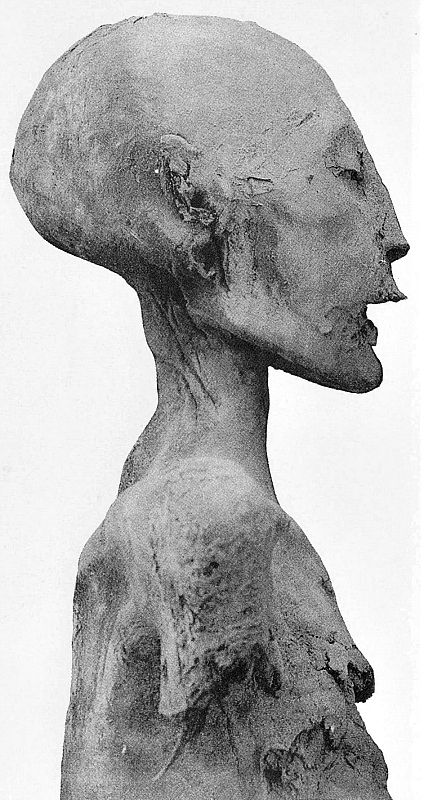
Profile photograph of the mummy of the Young Lady which, according to genetic studies, would correspond to Tutankhamun's mother. According to Marc Gabolde it is the mummy of Nefertiti. ( Wikimedia Commons )
Gabolde indicates in his latest book, centered on the figure of Tutankhamun, that Nefertiti would have died a few months before her husband "without ever having been 'pharaoh'." It would not have been she who reigned in Egypt between Akhenaten and Tutankhamen, but Meritaton , the eldest of the six daughters born of the marriage between Nefertiti and Akhenaten, would have done.
" Reinforced by her prestigious ancestry and by the fact that she had been her father's ' great royal wife ' for some months -probably in a purely honorary capacity after Nefertiti's death-, Meritatón reigned for about two full years ," says Gabolde. The tomb of Akhenaten's firstborn has not yet been discovered.
Absolutely exciting and interesting hypotheses, studies and opinions that, perhaps, in a matter of hours, will collapse if the British Nicholas Reeves is right and behind the walls of the tomb of Tutankhamun finds the mortal remains of Nefertiti.
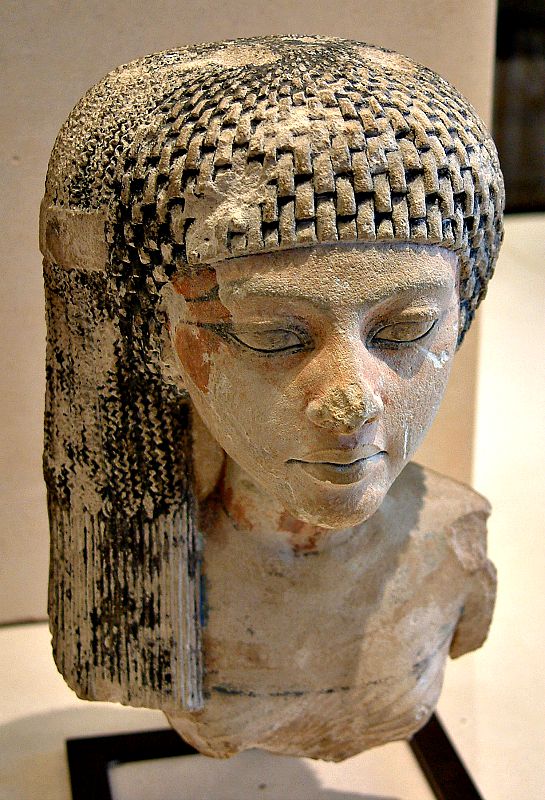
Bust of Meritatón, daughter of Nefertiti and Akhenaten and Great Royal Wife of the XVIII Dynasty. Louvre Museum, Paris. ( Wikimedia Commons )
Top image: Front view of the “Young Lady” mummy. ( Wikimedia Commons )
Author: Mariló TA
